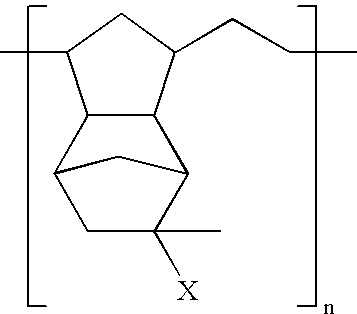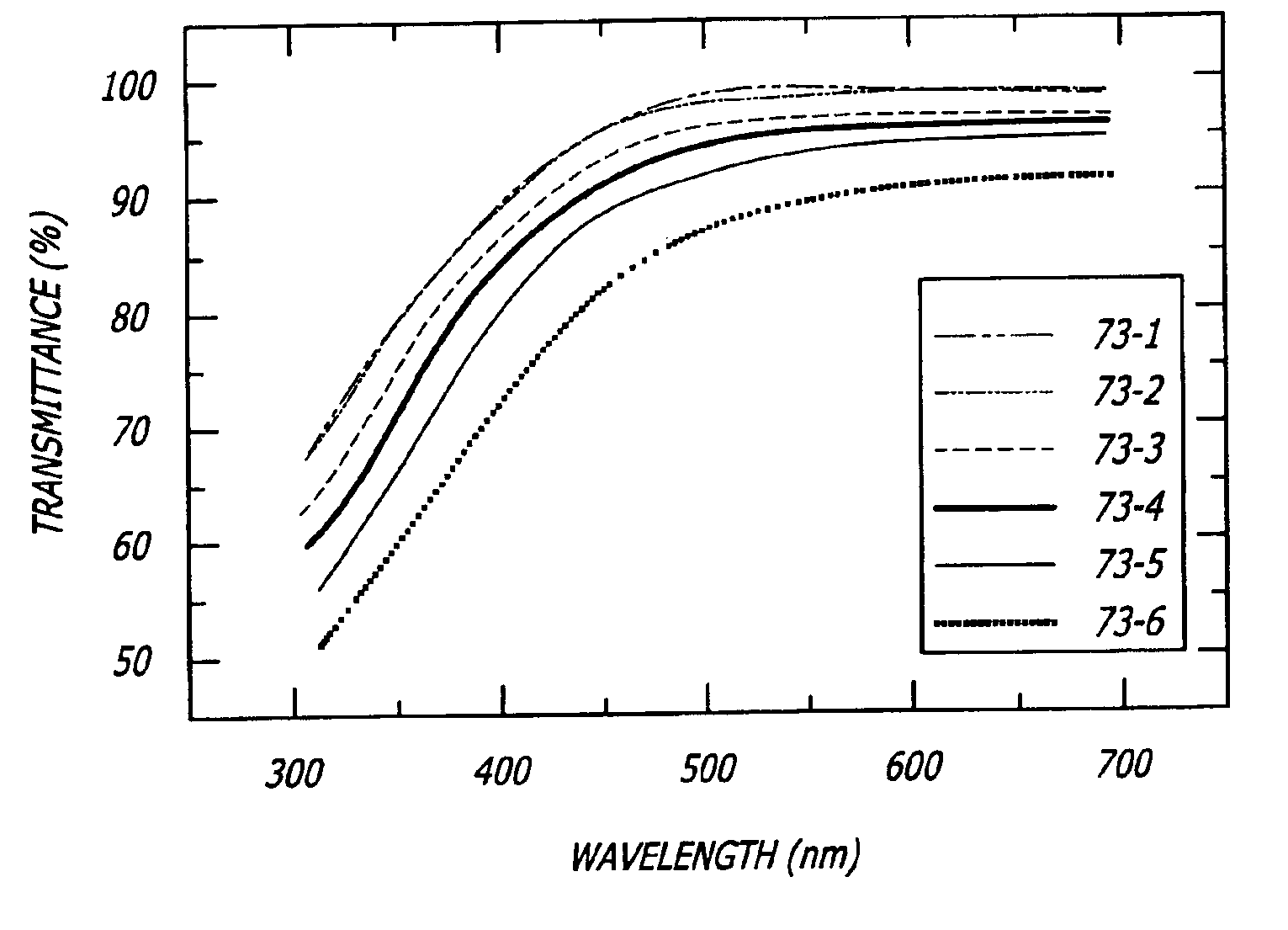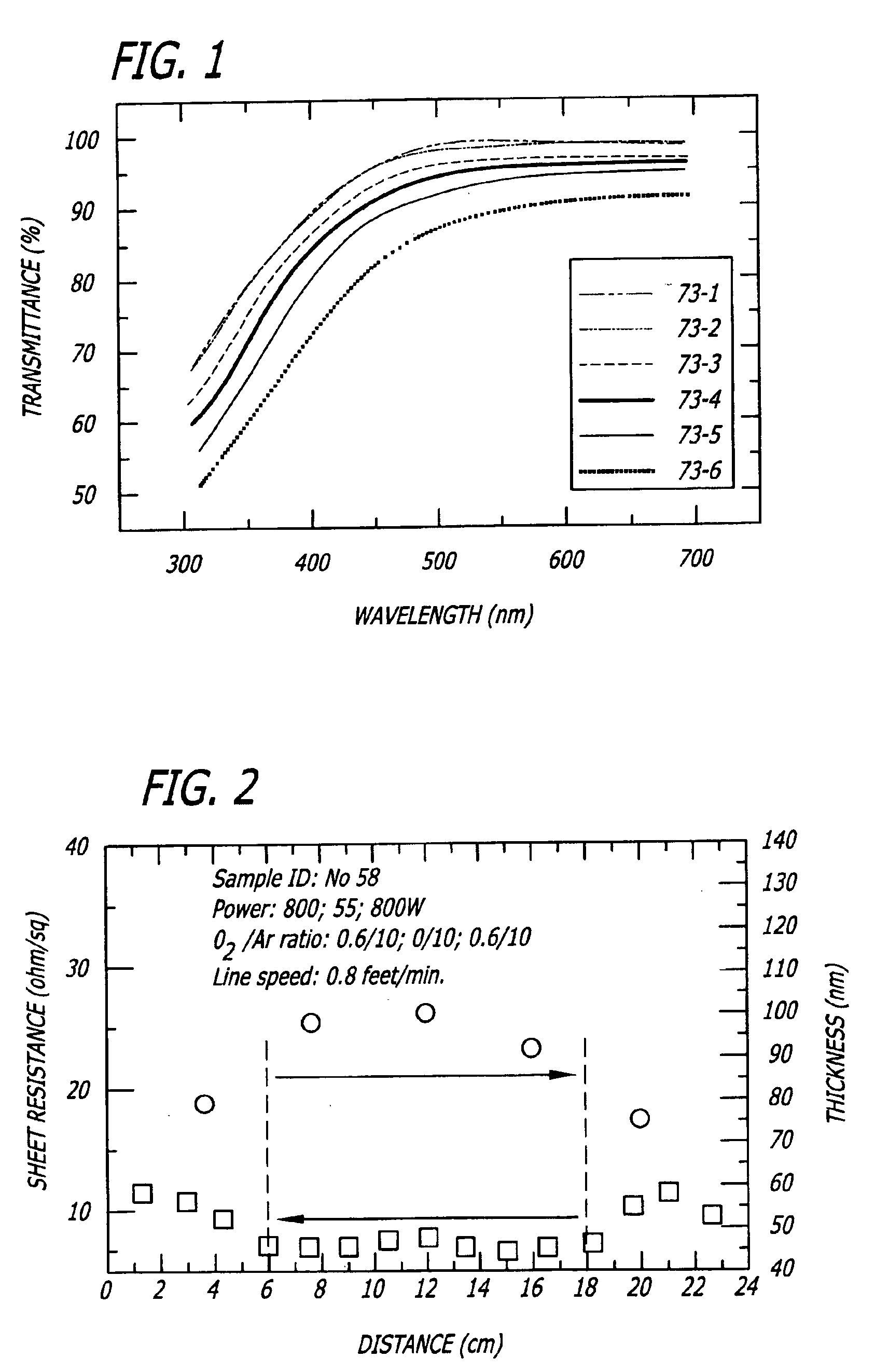Method for roll-to-roll deposition of optically transparent and high conductivity metallic thin films
a technology of high conductivity and metallic thin films, which is applied in the direction of non-metal conductors, instruments, applications, etc., can solve the problems of difficult control of chemical etching processes, inability to manufacture films by continuous process on flexible substrates, and inability to meet the requirements of continuous production, etc., to achieve low root-mean-square roughness, low electrical resistance, and high transmittance
- Summary
- Abstract
- Description
- Claims
- Application Information
AI Technical Summary
Benefits of technology
Problems solved by technology
Method used
Image
Examples
Embodiment Construction
. Experimental Procedure
Substrate materials were the different polymer plastics. Table 1 lists the properties of the plastic substrates selected for the deposition of InCeO / Ag / InCeO films. The hard coating on Lintec Arton has a surface composition of 35 at % C, 45 at % 0, and 20 at % Si, excluding hydrogen, and contains UV cured polyester acrylate and colloidal silica.
In addition, silicon wafer and glass were used as the substrate materials for the deposition.
Deposition experiments were carried out using Avery Sputtering System with the DC magnetron sputtering mode and the roll-to-roll substrate transportation.
The base pressure of the deposition chamber was 1.5-4.times.10.sup.-3 mT, and the working or deposition pressure was 2.4-3.1 mT. Prior to film deposition, the plastic roll was purged with Ar+O.sub.2 plasma to modify the surface chemistry of plastic materials. For the optimization of the plasma purging, the sputtering power was changed from 600 to 1200 W, and the gas flow-rate ...
PUM
| Property | Measurement | Unit |
|---|---|---|
| power | aaaaa | aaaaa |
| distance | aaaaa | aaaaa |
| deposition distance | aaaaa | aaaaa |
Abstract
Description
Claims
Application Information
 Login to View More
Login to View More - R&D
- Intellectual Property
- Life Sciences
- Materials
- Tech Scout
- Unparalleled Data Quality
- Higher Quality Content
- 60% Fewer Hallucinations
Browse by: Latest US Patents, China's latest patents, Technical Efficacy Thesaurus, Application Domain, Technology Topic, Popular Technical Reports.
© 2025 PatSnap. All rights reserved.Legal|Privacy policy|Modern Slavery Act Transparency Statement|Sitemap|About US| Contact US: help@patsnap.com



